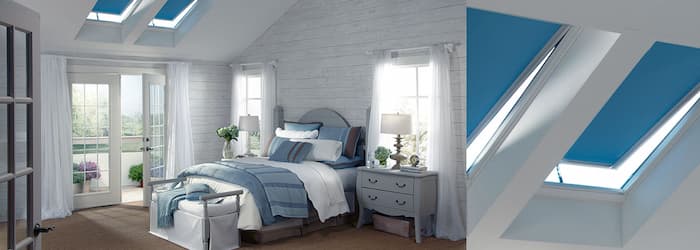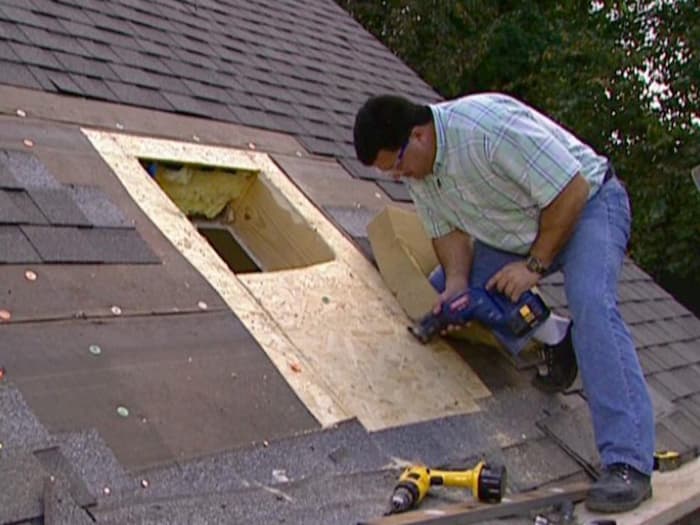How To Install a Skylight On A Shingle Roof
Commercial and industrial buildings install different features that improve the overall functionality and productivity of everyone inside. One example of a feature you can add is a VRF system that’s twice as strong and effective as an HVAC system. Another one is replacing old electrical systems with ones that can provide energy efficiency. Why not do the same for your home? Here’s how to install a skylight on a shingle roof.

If your focus is on saving energy, you should take advantage of skylights. They are the best alternative whenever you need adequate lighting inside your building without consuming electricity. If you have a commercial building and want to install a skylight of your own, you can find different expert tips to ensure a successful installation process.
Before starting a DIY skylight installation project
Don’t forget that you still need to make early preparations before cutting your roof to create an opening and install the skylight. It’s best to actually have some knowledge of how to install a skylight on a shingle roof. You should at least have previous experience if you want to ensure the installation process goes smoothly. Many inexperienced workers tried installing the skylight but cut the opening wrong or damaged the product in the process.
Some of the things we prepare in a professional skylight installation before beginning the skylight project include:
Adequate Experience
Ensure that you or the person tasked with the installation has ample experience handling power tools or making precise measurements. Every construction project you take goes smoothly to prevent any delays. You might also have to use more money in some cases, and you don’t want that to happen.
Extra Hands
Installing a skylight requires at least two or more people to assist in handing out tools or holding the skylight when placing it on the roof opening. A skylight is also a heavy material, so you must have other people to assist.
High-Quality Skylight
You can never start the installation project without the skylight. Make sure you look for a trustworthy company that sells high-quality skylights so that they won’t have any issues or imperfections. One skylight type you should consider getting is energy-efficient flat panel skylights to get multiple advantages with one product.
Safety Equipment
Keep yourself and other workers safe when walking around the roof by using harnesses, non-slip work boots, and other safety equipment. You may also need a ladder if the roof doesn’t have a roof hatch to easily access the top of the building.
Important Tools and Equipment
Power drills, circular saws, and a chalk line tool are some of the multiple tools and equipment you need to bring to use when installing the skylight. You can also check the skylight’s instruction manual to determine the critical things necessary to install it.
Seven easy steps to installing a skylight on a shingled roof
After getting the different things required, the next step is the installation process. You can install a basic skylight on your roof by following seven practical tips.
Step 1: Create the Roof Opening
The first step in how to install a skylight on a shingle roof is by cutting an opening on your roof. It’s ideal to do the installation under clear skies to prevent rainwater from going inside your building. Once you have the perfect weather, measure your skylight’s dimensions and use the measurements to cut the opening.
You have to place the skylight between joists and install the proper head joists to support the window properly. After marking the skylight’s roof opening, drill four long deck screws on the four corners of the marking. You have to do the marking and drilling on the roof’s interior side so that you can use the protruding screws as a guide when you start cutting on the exterior side.
Step 2: Place the Flashing
The second step is installing flashing throughout the window sill to create a barrier that prevents leaks. You have to apply self-adhesive flashing on every side to install it properly. Next is cutting to fold the edge over to make the barrier the same width as the skylight sill. Lastly, nail down the sides with your hammer or nail gun.
Step 3: Install the Skylight
Step three is to place the skylight on your roof opening. You will require two or more people to lay down the skylight gently. You can also use a pulley system if you and your workers find the skylight too heavy to lift. After you set the skylight, you have to use 1.25” roofing nails to secure it.
Step 4: Seal All Edges
Make sure you seal the skylight’s sides effectively by cutting a self-adhesive membrane to stick on the flanges. A good tip is to let the membrane extend out of the edge a few inches to prevent water or moisture from going in.
Step 5: Position Sill Flashing
Most skylights you purchase will include a u-shaped flashing to position on the bottom sill. You can slide it in place with ease and secure each side by nailing them. You can finally install the shingles back to their original positions while covering the sill flashing.
Step 6: Place Step Flashing
If your commercial building has a slanting pitched roof, you will need to place step flashing on the skylight’s sides. You should start by installing the step flashing from the bottom and work your way up. Once you install the first step flashing, you have to place the other pieces by overlapping the previous shingle by several inches.
Step 7: Install Counter Flashing and Saddle Flashing
You can install the counter flashing easily since it only clicks into place when putting the step flashing on every side. Next is to install the saddle flashing that you will place on top, similar to a sill flashing. Install the saddle flashing with roofing nails and put back the shingles over the saddle flashing to finish the job.
Hopefully, you can follow the seven steps mentioned above to install your skylight correctly. Make sure you don’t miss a step to avoid creating issues with your skylight.

